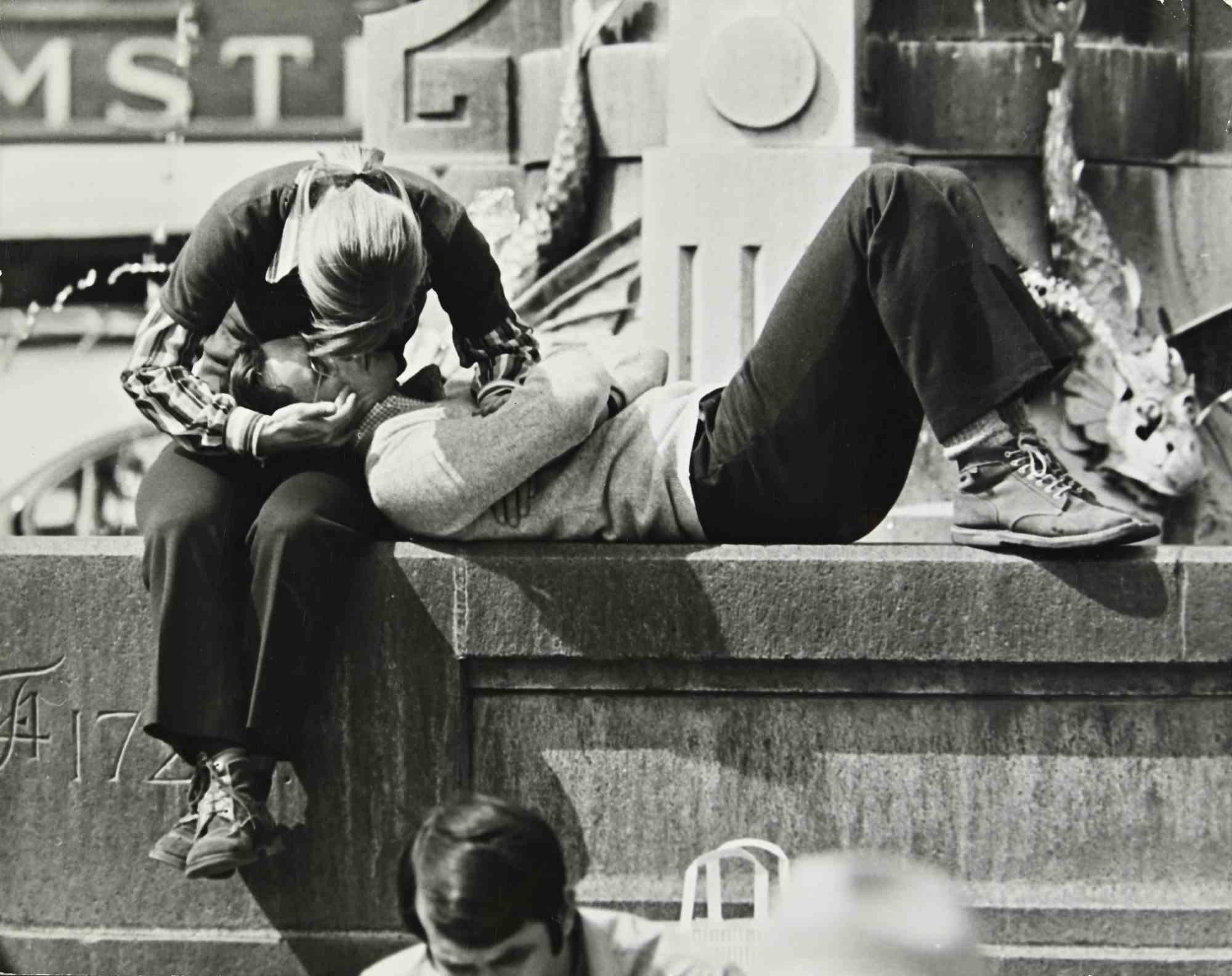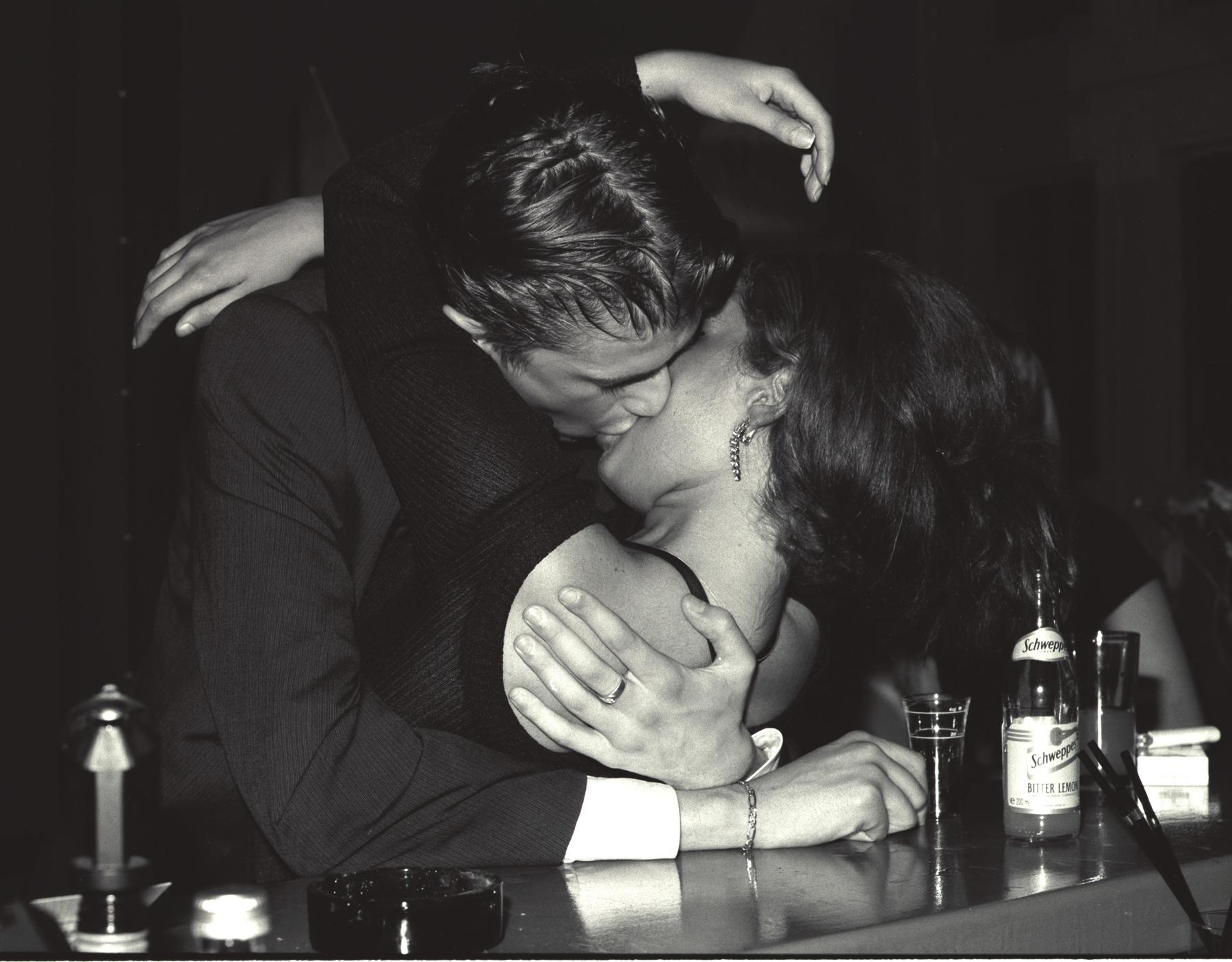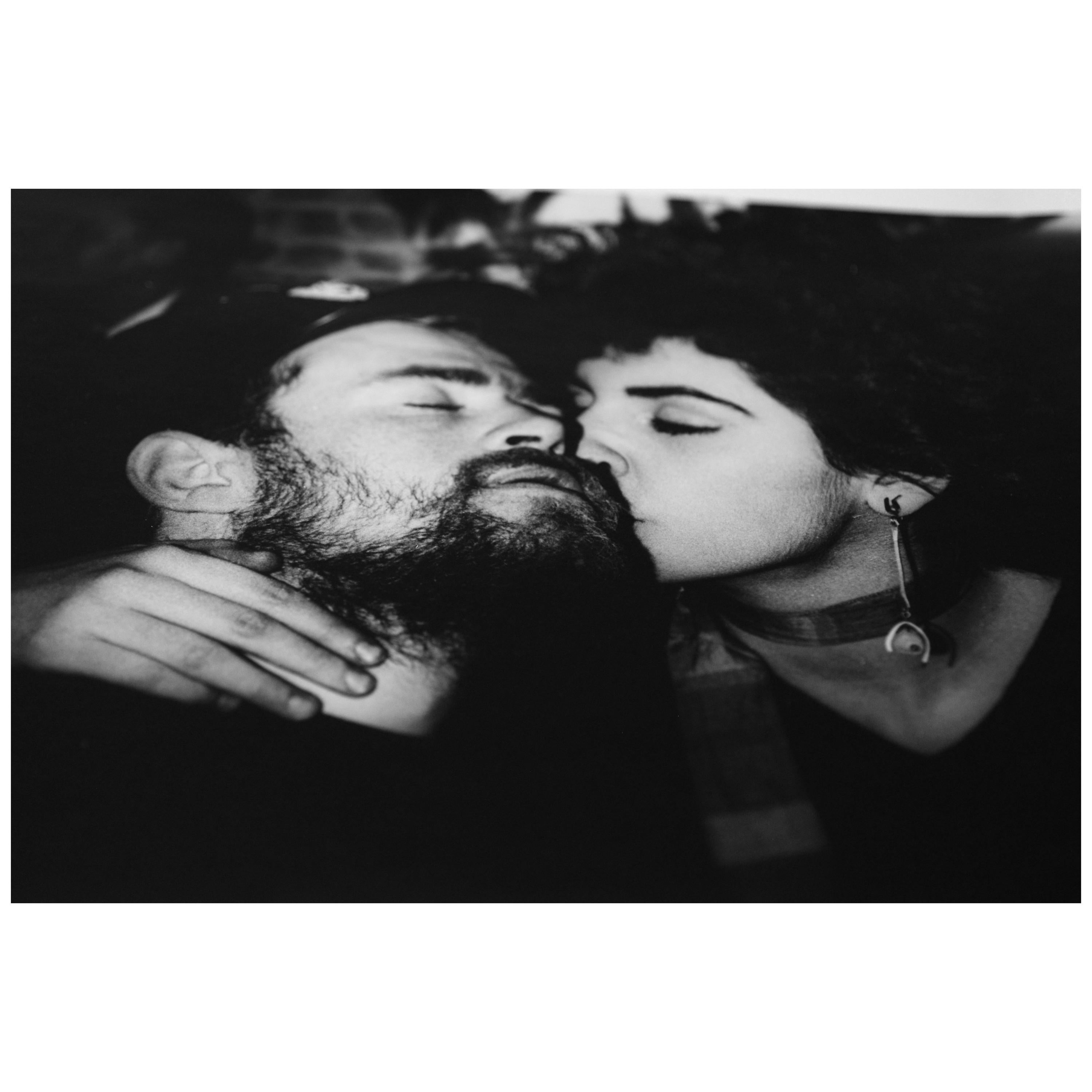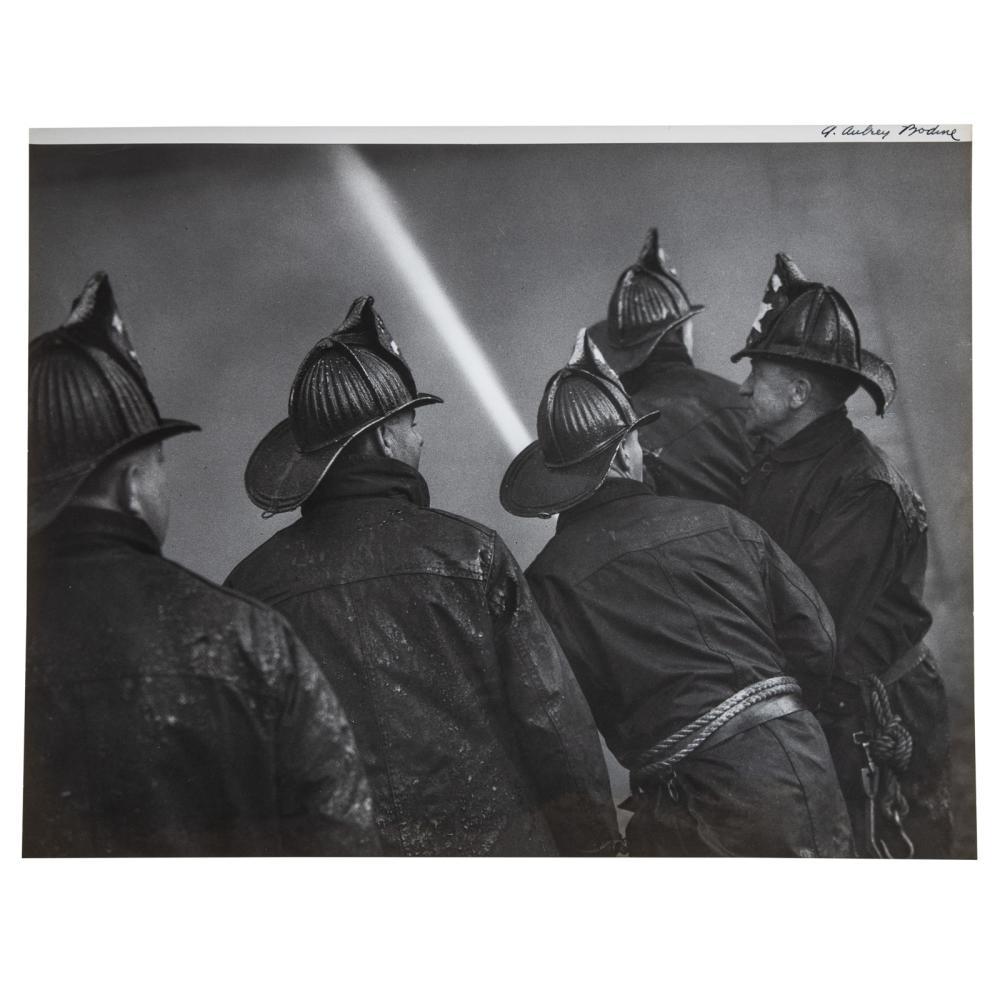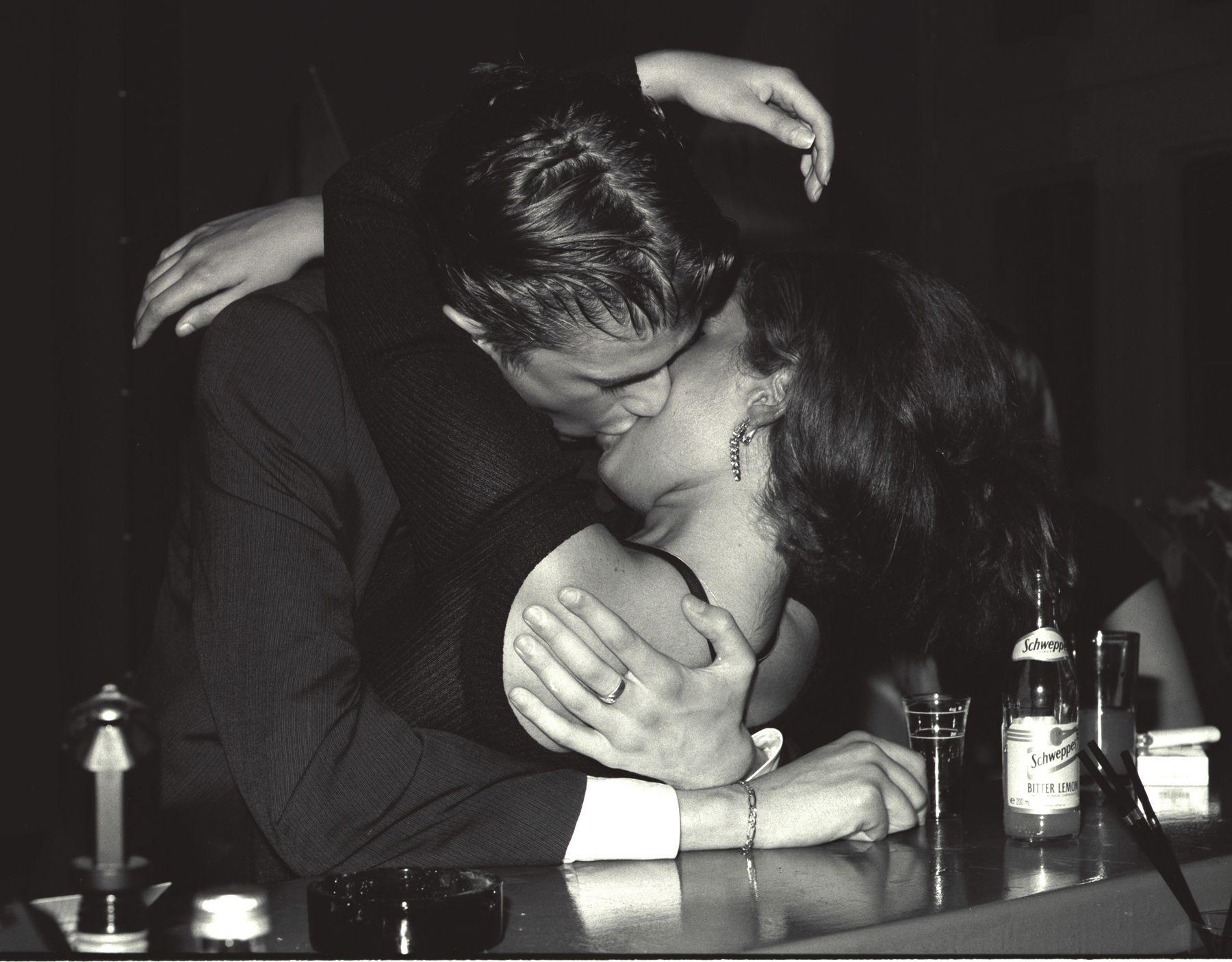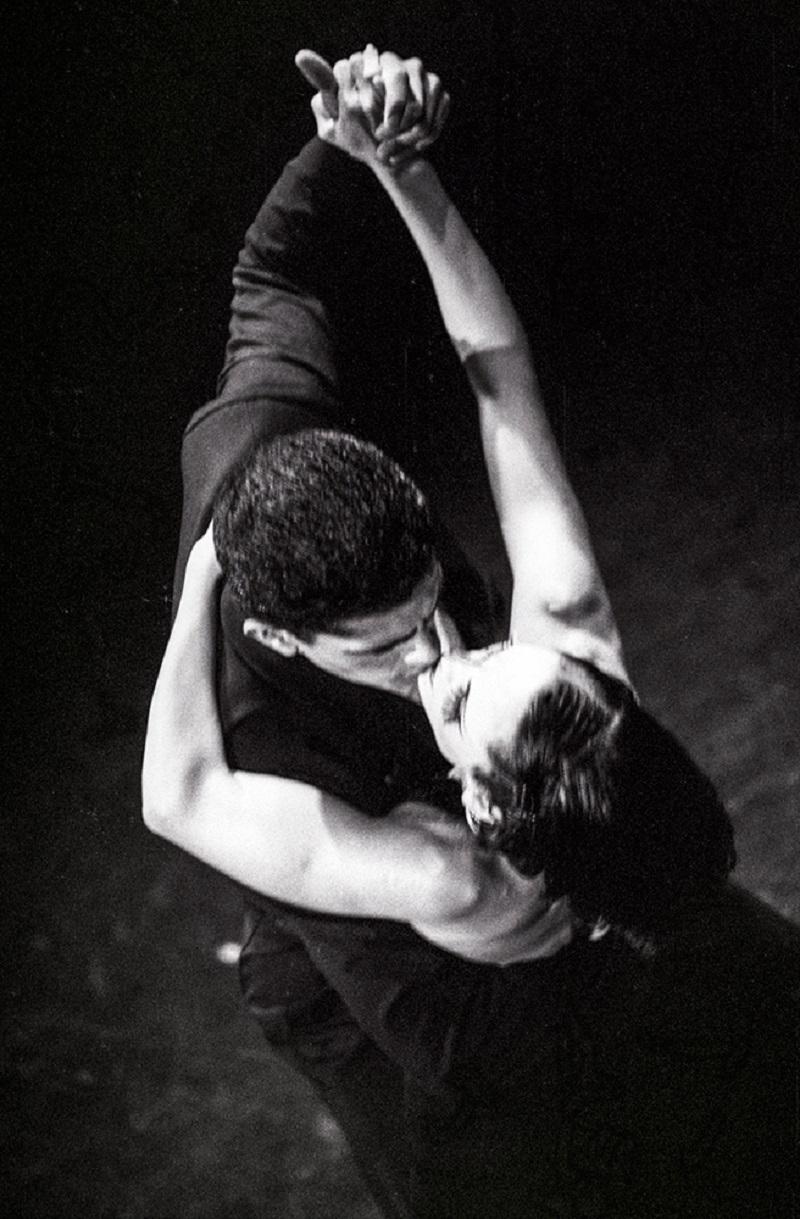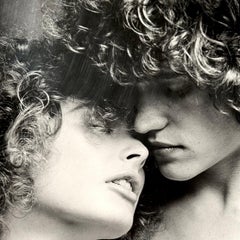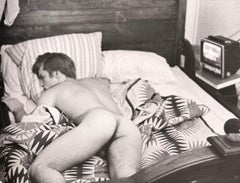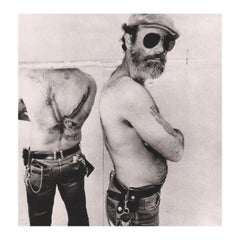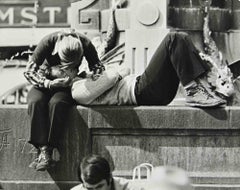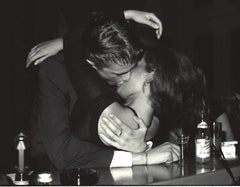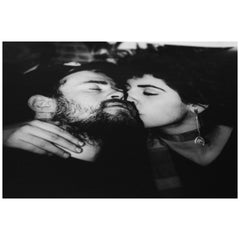Items Similar to Jill Freedman Kissing FDNY 1976, Black & White Photo on Kodak Endura, Signed
Want more images or videos?
Request additional images or videos from the seller
1 of 9
Jill Freedman Kissing FDNY 1976, Black & White Photo on Kodak Endura, Signed
$5,472
$6,84020% Off
£4,183.64
£5,229.5420% Off
€4,818.70
€6,023.3820% Off
CA$7,667.95
CA$9,584.9420% Off
A$8,560.54
A$10,700.6820% Off
CHF 4,485.60
CHF 5,60720% Off
MX$104,789.47
MX$130,986.8420% Off
NOK 56,967.12
NOK 71,208.9020% Off
SEK 53,712.76
SEK 67,140.9620% Off
DKK 35,962.47
DKK 44,953.0920% Off
Shipping
Retrieving quote...The 1stDibs Promise:
Authenticity Guarantee,
Money-Back Guarantee,
24-Hour Cancellation
About the Item
Jill Freedman Kissing FDNY 1976, black & white photo on Kodak Endura, Signed. Image also known as ‘Brotherly Love.” This is a black and white photograph on Kodak Endura, handsigned by the artist. 7 x 5 inches. Unframed.
Jill Freedman (October 19, 1939 – October 9, 2019) was an American documentary photographer and street photographer. In 1964 Freedman came to New York City and had several temporary jobs including advertising copywriter. She only discovered photography while experimenting with a friend's camera.
As a photographer, she was self-taught, influenced by André Kertész, idolizing W. Eugene Smith, according to the artist, primarily helped by her poodle Fang:
“When I was out walking in the street with Fang I saw everything, felt everything. He had a great instinct. He taught me how to look, because he never missed a thing.”
Andy Grundberg would also note the influences on her style of Smith, Henri Cartier-Bresson, Don McCullin, Leonard Freed, and Weegee; but would add that: "To appreciate [her] photographs one needs to consider their substance, not their style. . . . Human relationships – especially the bonds of brotherhood – fascinate her."
On hearing of the assassination of Martin Luther King, Freedman quit her job and went to Washington, DC. She lived in Resurrection City, a shantytown put up by the Poor People's Campaign on Washington Mall in 1968, and photographed there. Photographs from the series were published at the time in Life, and collected in Freedman's first book, Old News: Resurrection City, in 1970. A. D. Coleman wrote of the book: It is a very personal yet highly objective statement, filled with passion, warmth, sorrow and humor. Freedman's pictures are deft and strong; her text witty, sardonic and honest, with quirky insights and touching moments of self-revelation. A brave and moving book.
Freedman then lived in a Volkswagen kombi, following the Clyde Beatty-Cole Brothers Circus. For two months, she photographed "two shows a day and one show each Sunday. Seven weeks of one night stands", and moving across New York, Massachusetts, New Jersey, Rhode Island, New Hampshire, Vermont, Pennsylvania and Ohio. She wanted to photograph the performers as people. ("If I wanted to do freaks, I'd do guys wearing ties in 100-degree weather – to me that's freaks." The work was published as a book, Circus Days, in 1975.
Freedman photographed the then sleazy area of 42nd Street and the glamorous arts scene in Studio 54 and SoHo.
By the second half of 1975, Freedman started to photograph firefighters around Harlem and the Bronx. This took her two years; she lived with the firefighters, sleeping in the chief's car and on the floor. This resulted in a book, Firehouse, published in 1977.
Some of the firefighters had previously been policemen, and they suggested that Freedman might photograph police work. Freedman had disliked the police but reasoned that there must be good policemen among them. For her series Street Cops (1978–1981), she accompanied the police to an area of New York City including Alphabet City and Times Square, spending time with those who seemed good cops. The work resulted in the book Street Cops. A contemporary reviewer for Popular Photography started by observing that "the passionate photojournalistic essay of yesterday" was "an endangered species", before saying that it lived on in photobooks such as this one. The reviewer described Street Cops as "[celebrating] the heroism, compassion, and humor of New York police professionals", and saying that the book "is traditional and satisfying in that it accomplishes a blend rarely successful – or even attempted – these days: an organic fusion of words and photographs".
On photographing in New York at the time:
Hiding behind a camera, [Freedman] found her subjects where others were not looking – "beggars, panhandlers, people sleeping on the street," the police and the firefighters, the people washed ashore by forces bigger than themselves. "It's the theater of the streets," she said. "The weirder, the better."
During the seventies, Freedman was briefly associated with Magnum Photos, but did not become a member. She wanted to tell stories via photography, but also wanted to avoid the schmoozing required to get commissions; and she therefore set her own tasks. She had difficulty making a living, but sold prints from a stand set up outside the Whitney Museum building. In 1983, New York Times critic Andy Grunberg recognized her black and white street photography in New York, grouping Freedman with Lee Friedlander, Fred R. Conrad, Bruce Davidson, Roy DeCarava, Bill Cunningham, Sara Krulwich and Rudy Burckhardt.
In 2016, Freedman's work and career, especially her images of New York City, was the subject of renewed interest, appearing in multiple Vice articles, including their 2016 photography issue and at Art Basel Miami. Freedman passed away in Manhattan on October 9, 2019.
- Dimensions:Height: 7 in (17.78 cm)Width: 5 in (12.7 cm)Depth: 1 in (2.54 cm)
- Materials and Techniques:
- Place of Origin:
- Period:
- Date of Manufacture:circa 1976
- Condition:Wear consistent with age and use.
- Seller Location:Brooklyn, NY
- Reference Number:1stDibs: LU4190330268402
About the Seller
5.0
Platinum Seller
Premium sellers with a 4.7+ rating and 24-hour response times
Established in 2017
1stDibs seller since 2018
654 sales on 1stDibs
Typical response time: 2 hours
- ShippingRetrieving quote...Shipping from: Brooklyn, NY
- Return Policy
Authenticity Guarantee
In the unlikely event there’s an issue with an item’s authenticity, contact us within 1 year for a full refund. DetailsMoney-Back Guarantee
If your item is not as described, is damaged in transit, or does not arrive, contact us within 7 days for a full refund. Details24-Hour Cancellation
You have a 24-hour grace period in which to reconsider your purchase, with no questions asked.Vetted Professional Sellers
Our world-class sellers must adhere to strict standards for service and quality, maintaining the integrity of our listings.Price-Match Guarantee
If you find that a seller listed the same item for a lower price elsewhere, we’ll match it.Trusted Global Delivery
Our best-in-class carrier network provides specialized shipping options worldwide, including custom delivery.More From This Seller
View AllFrancesco Scavullo, Warhol Factory: Jay Johnson & Woman I, 1968, USA
By Francesco Scavullo
Located in Brooklyn, NY
Francesco Scavullo black & white photograph Jay & Jed Johnson, photo mounted on board. From Scavullo Studio. 1968-1969. 18.25 x 12.25 inches.
Minnesota twins, Jay and Jed Johnson m...
Category
Mid-20th Century American Other Photography
Materials
Paper
$5,152 Sale Price
20% Off
Robert Frank Untitled from the Americans, 1958, Beats Culture, Black & White
By Robert Frank
Located in Brooklyn, NY
Robert Frank Untitled from the Americans, 1958, Beats Culture, Black & White.
Photogravure print, mid-century, France,wax tissue mounted on conservation matboard.
Influenced by the work of Jakob Tuggener and Bill Brandt, as well as Walker Evans, Frank, a native of Switzerland, Frank was fascinated by documentary photography and the notion and image of "America." Frank secured a Guggenheim fellowship in 1955 to do something new and unconstrained by commercial diktats. "The Americans" was first published in 1958 in France, before its first run in the US in 1959. The photographs were shocking and notable for their distanced view of both high and low strata of American society, creating a complicated portrait of a period that was, then and now, considered to be a skeptical portrait of post-WWII American values but also deeply empathetic and profoundly evocative of ubiquitous loneliness.
Frank found a tension in the gloss of American culture and wealth over race and class differences, which gave his photographs a clear contrast to those of most contemporary American photojournalists, as did his use of unusual focus, low lighting and cropping that deviated from accepted photographic techniques.
Shortly before the book was published in France, Frank returned to the US (1957) and met Jack Kerouac on the sidewalk outside a party. They started chatting. Frank showed him some of his photographs. Kerouac immediately told Frank "Sure, I can write something about these pictures." Kerouac would write the introduction to the American edition of the book, published two years later.
Sociologist Howard S...
Category
Mid-20th Century American Mid-Century Modern Photography
Materials
Paper
$824 Sale Price
55% Off
Andy Warhol, Joe Dellasandro, ‘Flesh, 1968’, Black & White Photograph, 1978.
By Andy Warhol
Located in Brooklyn, NY
Andy Warhol, Joe Dellasandro, ‘Trash’, 1968 (1978), Black & White Photograph. Large silver gelatin print. Printed in 1978. Provenance: Archive of After Dark Magazine, New York. This ...
Category
Mid-20th Century American Photography
Materials
Paper
$5,152 Sale Price
20% Off
Biker in a Mirror Black and White Photograph Gravure Print by Burk Uzzle, 1980
Located in Brooklyn, NY
Biker in a mirror black and white photograph Gravure print by Burk Uzzle 1980
Gravure print (1984, France).
Burk Uzzle is an American photojournalist, previously member of Mag...
Category
Late 20th Century American Mid-Century Modern Prints
Materials
Paper
$1,040 Sale Price
20% Off
Francesco Scavullo, Warhol Factory: Jay Johnson & Woman II, 1968, USA
By Francesco Scavullo
Located in Brooklyn, NY
Francesco Scavullo black & white photograph Jay & Jed Johnson, mounted on board. From Scavullo Studio. 1968-9. 18.25 x 12.25 inches.
Minnesota twins, Jay and Jed Johnson moved to N...
Category
Mid-20th Century American Modern Photography
Materials
Paper
$5,952 Sale Price
20% Off
Francesco Scavullo, Warhol Factory, Jay & Jed Johnson I, 1968
By Francesco Scavullo
Located in Brooklyn, NY
Francesco Scavullo black & white photograph Jay & Jed Johnson. Large scale photo on board from Scavullo Studio. 1968-1969. 18.25 x 12.25 inches.
Minnesota twins, Jay and Jed Johnson...
Category
Vintage 1960s American Photography
Materials
Paper
$10,112 Sale Price
20% Off
You May Also Like
The Kiss - Photo by Steen Mansson - 1970s
Located in Roma, IT
The Kiss is a black and white vintage photo, realized in 1970s, by Steen Mansson.
Good conditions and aged.
It belongs to a historical and nostalgic album including historical mome...
Category
1970s Modern Figurative Photography
Materials
Photographic Paper
Berlin Kiss by Harry Benson
By Harry Benson
Located in Cleveland, OH
Harry Benson was born near Glasgow, Scotland. The photographer was assigned to travel with the Beatles on their first American tour in 1964. His iconic photograph shows the band in a gleeful pillow fight in a hotel room. Benson has photographed every U.S. president from Eisenhower to Barack Obama. He was feet away when Bobby Kennedy was assassinated; in the room when Nixon resigned; with Martin Luther King, Jr. on the Meredith march; and with Coretta Scott King...
Category
1990s Black and White Photography
Materials
Archival Pigment
Weegee 'Cafe Romance', New York, 1953
By Weegee 1
Located in Hamilton, Ontario
Weegee (Ukranian/American 1899-1968)
Title: 'Cafe Romance', New York 1953
Gelatin silver print
Signed, titled, dated in ink au verso
'Corkin Gallery' label au verso
stamped "weegee the famous" au verso
Image size: 11" x 13.5"
Mat size: 21" x 24"
Biography:
Probably few policemen have seen as much violent sin as Arthur Fellig, better known as Weegee, did. Specializing in crime and catastrophe, Weegee’s work is regarded as some of the most powerful images of the 20th century. His profound influence on other photographers derives not only from his sensational subject matter and his use of the blinding, close-up flash, but also from his eagerness to photograph the city at all hours, at all levels: coffee shops at three in the morning, hot summer evenings in the tenements, debutante balls, parties in the street, lovers on park benches, the destitute and the lonely. No other photographer has better revealed the non-stop spectacle of life in New York City.
During the 1930s and 1940s Weegee worked as a freelance news photographer in New York City, and was the first private citizen to gain access to police radio transmits. He lived across the street from Manhattan police headquarters waiting for the inevitable call that would announce another gangland execution, botched hold-up, or crime of passion.
Weegee’s first book, Naked City, was a runaway success, making him an instant celebrity who suddenly had assignments from Life and Vogue. He was among the first to fully realize the camera’s unique power to capture split-second drama and exaggerated emotion. By the mid-40s, Weegee photographed...
Category
20th Century American Photography
Five Fireman 1940s Mid Century WPA Era Modern Baltimore Black & White Photograph
Located in New York, NY
Fine Fireman 1940s Mid Century WPA Era Modernism Baltimore Black & White Photograph. A. Aubrey Bodine (American, 1906-1970). Gelatin silver print, signed...
Category
1940s Realist Black and White Photography
Materials
Silver Gelatin
Berlin Kiss
By Harry Benson
Located in Cleveland, OH
Harry Benson's photographs capture some of the most iconic moments and personalities of the 20th century, from his intimate shots of The Beatles to his powerful images of political a...
Category
20th Century Black and White Photography
Materials
Archival Pigment
Price Upon Request
El Beso by James Sparshatt. 20" x 16" silver gelatin print
By James Sparshatt
Located in Coltishall, GB
A fleeting touch of the lips on a tango dance floor
James Sparshatt’s photographs of music and dance capture the emotion and intensity of people lost in the rhythm of the moment.
The...
Category
21st Century and Contemporary Contemporary Photography
Materials
Silver Gelatin
More Ways To Browse
Soho Vintage Furniture
Cartier Tie
Camera Stand
Cartier Roy King
R W Martin Brothers
Don Conrad
Carl Evers
Cheval Horse
Chinese Dragon Carved Tables
Chrome Plinth
Danish Mirror Rosewood
Dunbar Pulls
Eagle Shield
Gilded Bronze Buddha
Glass And Black Metal Kitchen Cabinet
Green Man Carved
Multi Drawer Storage Cabinet
Pagoda Painting
